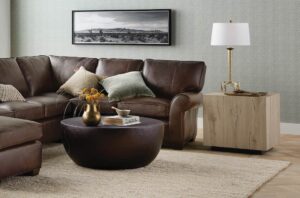The quest for quality outdoor furniture has never been more pressing, especially as Polywood vs Breezesta rise in prominence.
Homeowners increasingly seek outdoor setups that not only serve as functional lounging spaces but also as extensions of their indoor living areas.
Yet, challenges arise. Weather conditions and long-term use put furniture to the test, leading to the dilemma of finding products that withstand time and elements.
Enter Polywood and Breezesta—two brands that offer not only robustness but also the style and sustainability that today’s discerning consumers demand.
Comparison Polywood vs Breezesta
| Feature | Polywood | Breezesta |
|---|---|---|
| Material | HDPE from recycled plastics | HDPE from recycled plastics |
| Strength & Durability | UV-protected, 20-year warranty | Patented blend, 25-year warranty |
| Style & Design | Contemporary designs, various colors | Traditional designs, shades of brown and off-white |
| Maintenance | Minimal; occasional wipe down | Occasional cleaning with mild soap and water |
| Environmental Impact | 100% recycled HDPE, heat and pressure forming | 100% recycled HDPE, injection molding |
| Structural Integrity | UV inhibitors, 20-year warranty | Stainless steel hardware, 25-year warranty |
| Chemical Resistance | Special coating for UV, scratch, stain resistance | Color-Stay technology for UV and household chemical resistance |
| Design Flexibility | Many color options, fade resistance | Range of colors, can be repainted |
| Overall Recommendation | Known for craftsmanship, design elements | Known for cost-efficiency, minimal maintenance |
What Defines Quality in Outdoor Furniture
The criteria for quality outdoor furniture extend beyond mere aesthetics. Factors like material composition, durability, and design considerations play significant roles in selecting furniture that meets your long-term needs.
This section will elucidate these pivotal attributes, providing a clearer framework for comparing Polywood vs Breezesta.
Role of Material Composition
Materials matter. High-density polyethylene (HDPE) has emerged as a leading material for outdoor furniture, used by both Polywood and Breezesta. This material, crafted from recycled plastics, offers several advantages:
- Sustainability: Utilizes post-consumer waste, contributing to environmental responsibility.
- Weather Resistance: Effectively withstands varying weather conditions without degrading.
- Low Maintenance: Requires minimal care compared to traditional wood or metal furniture.
Note: HDPE furniture typically carries higher initial costs, but its long-term value often offsets this investment.
Importance of Durability
Durability is not just an option; it’s a requirement. Outdoor furniture is exposed to sun, rain, and sometimes even snow. Polywood furniture comes with a 20-year warranty, affirming its UV-protected and corrosion-resistant attributes.
On the other hand, Breezesta offers a 25-year warranty, thanks to its patented blend of recycled plastics that resists damage.
- UV Protection: Both brands offer UV-resistant products, crucial for long-term color retention.
- Corrosion Resistance: Designed to withstand corrosive substances like saltwater.
Aesthetic Considerations
Lastly, the design and style of outdoor furniture should align with your personal preferences and the overall theme of your outdoor space.
Polywood caters to a more contemporary audience with its range of colors, while Breezesta leans towards traditional designs available in neutral shades. It’s not just about filling a space; it’s about enhancing it.
- Color Choices: Polywood offers a vibrant palette, and Breezesta presents more muted options.
- Design Flexibility: Polywood offers customization options, whereas Breezesta emphasizes ease of repainting.
In the quest for outdoor furniture that satisfies all these criteria, Polywood and Breezesta stand as compelling options to consider.
Understanding HDPE in Furniture
High-density polyethylene, commonly referred to as HDPE, is integral in shaping the quality and sustainability of modern outdoor furniture.
This section delves into the essence of HDPE, its role in promoting sustainability, and its transformative impact on the furniture industry, specifically how it applies to brands like Polywood and Breezesta.
Definition and Key Characteristics
HDPE is a type of plastic derived from post-consumer recycled materials like milk jugs. It’s renowned for its distinctive properties, making it highly desirable in the manufacturing of outdoor furniture.
Here are some key characteristics:
- Durability: Exceptional strength-to-density ratio, allowing for a long lifespan.
- Chemical Resistance: Resistant to corrosive substances, moisture, and other environmental factors.
- Ease of Maintenance: Typically requires just a simple cleaning, saving both time and resources.
| Characteristic | Description |
|---|---|
| Durability | Exceptional strength-to-density ratio |
| Chemical Resistance | Resistant to corrosive substances and moisture |
| Maintenance | Low; typically requires only simple cleaning |
Sustainability Factors
One of the defining elements of HDPE is its sustainability. This material is often made from recycled plastics, turning waste into something useful and durable.
Both Polywood and Breezesta prioritize this aspect, incorporating 100% recycled HDPE into their furniture.
- Recycled Materials: Converts post-consumer waste into functional items.
- Sustainable Production: Both brands utilize sustainable methods in manufacturing.
- Energy Efficient: Lower energy requirements compared to other materials.
Note: The initial cost might be higher, but the long-term environmental benefits often justify the investment.
Role in the Furniture Industry
HDPE has redefined what consumers expect from outdoor furniture. Its resilience and low maintenance requirements make it a top choice for many.
The industry has recognized these advantages, with companies like Polywood and Breezesta setting benchmarks in utilizing HDPE to deliver products that are both durable and sustainable.
- Setting Benchmarks: Brands have utilized HDPE to redefine quality standards.
- Consumer Expectations: Elevated by the advantages HDPE brings to the table.
- Innovative Technologies: Both brands use unique methods like injection molding and heat treatment.
HDPE is more than just a material; it’s a significant change agent in the furniture industry. With its unbeatable characteristics and sustainability factors, it stands as a compelling option for those looking to invest in long-lasting, responsible outdoor furniture.
Material Composition and Sources
The core building blocks of any piece of outdoor furniture lie in its material composition. Paying close attention to this aspect can provide significant insights into the durability, aesthetics, and environmental impact of the furniture.
This section focuses on the material constituents of Polywood and Breezesta, along with how these brands incorporate environmental considerations into their sourcing practices.
Origin of Polywood Material
Polywood predominantly uses High-Density Polyethylene (HDPE), a recycled plastic derived from post-consumer waste such as milk jugs and detergent bottles. Polywood prides itself on transforming this waste material into durable, weather-resistant furniture.
Key highlights include:
- Recycled Plastic: High use of post-consumer waste.
- Weather Resistance: Exceptional resistance to environmental factors.
- Longevity: Ensures a prolonged lifespan due to high-quality material.
| Feature | Polywood Material |
|---|---|
| Base Material | HDPE (High-Density Polyethylene) |
| Source | Post-Consumer Waste |
| Key Properties | Weather Resistance, Longevity |
Breezesta’s Unique Material Blend
Unlike Polywood, Breezesta offers a unique blend of HDPE and other proprietary materials. This blend is specifically engineered to deliver a distinct texture and finish to the furniture.
Notable elements are:
- Texture and Finish: Diverse options for consumers.
- Innovative Blend: Use of additional proprietary materials.
- Quality: Delivers furniture with fewer maintenance requirements.
| Feature | Breezesta Material |
|---|---|
| Base Material | HDPE and Proprietary Blend |
| Texture | Varied |
| Maintenance | Low Requirement |
Note: The proprietary blend used by Breezesta offers consumers a different set of aesthetic and tactile experiences, further broadening their choices.
Environmental Consciousness in Source Materials
Both brands are exemplary in demonstrating commitment to environmental stewardship. Polywood uses 100% recycled HDPE, while Breezesta’s manufacturing process also gives due consideration to environmental factors.
- Sustainable Practices: Prioritized by both brands.
- Recycled Content: High level of post-consumer waste used.
- Environmental Certification: Complying with relevant regulations and standards.
The choices made by Polywood and Breezesta in their material sourcing significantly contribute to their product quality and environmental responsibility.
Therefore, understanding these material compositions and their sources becomes an essential step in making an informed purchase.
Strength and Durability Analysis
A pivotal factor in choosing outdoor furniture is how well it can stand up to the elements. With Polywood vs Breezesta, the focus on strength and durability is paramount.
In this section, we delve into the measures these brands have taken to ensure their products are not only long-lasting but also resistant to various forms of damage.
How Polywood Protects Against UV Damage
Polywood incorporates UV-inhibitors directly into its material composition. This is specifically designed to reduce fading and prevent damage from the sun’s harsh rays.
Critical points to consider are:
- UV-Inhibitors: Protect against discoloration and fading.
- Color Retention: Maintains the original color for an extended period.
- Maintenance-Free: No need to repaint or re-stain over the years.
| Feature | Polywood Protection |
|---|---|
| UV Protection | UV-Inhibitors |
| Color Stability | High |
| Maintenance | Low Requirement |
Breezesta’s Damage Resistance Features
Breezesta prioritizes a unique mix of materials to ensure a robust and damage-resistant product.
Key features include:
- All-Weather Resistance: Capable of withstanding a range of climatic conditions.
- Impact Resistance: Designed to absorb and distribute impact effectively.
- Scratch Resistance: Surface engineered to minimize visible scratches.
| Feature | Breezesta Resistance |
|---|---|
| All-Weather | Yes |
| Impact Resistance | High |
| Scratch Resistance | Moderate |
Note: Breezesta offers a wider range of resistance features, making it a versatile choice for various environmental conditions.
Warranty Comparisons
Comparing the warranties offered by both companies can provide valuable insights into how confident they are about their products’ durability.
- Polywood: Generally offers a 20-year residential warranty.
- Breezesta: Offers a lifetime residential warranty.
- Commercial Use: Both brands offer shorter warranties for commercial applications.
| Feature | Polywood Warranty | Breezesta Warranty |
|---|---|---|
| Residential | 20 Years | Lifetime |
| Commercial | Varies | Varies |
The warranty terms are a direct reflection of the brands’ trust in their products’ durability and longevity. A thorough analysis of these aspects will significantly aid in making an educated selection between Polywood and Breezesta.
Style and Design Preferences
Beyond durability and material composition, the style and design of outdoor furniture play a crucial role in the decision-making process. Let’s delve into the aesthetic options that Polywood and Breezesta offer to enhance your outdoor space.
A Look at Polywood’s Contemporary Offerings
Polywood caters to those with an inclination toward sleek, minimalist designs. With clean lines and understated elegance, Polywood’s furniture is ideal for modern outdoor spaces.
Notable features include:
- Simplicity: Focuses on minimalist design elements.
- Geometric Shapes: Predominantly uses rectangles and squares for design consistency.
- Neutral Colors: Offers furniture in shades like gray, black, and white.
| Design Element | Polywood Preference |
|---|---|
| Style | Contemporary |
| Shapes | Geometric |
| Color Palette | Neutral |
Traditional Tones in Breezesta Furniture
Breezesta, on the other hand, leans more towards traditional designs that evoke a sense of comfort and nostalgia.
The brand uses:
- Curved Lines: To bring softness and fluidity to the design.
- Intricate Patterns: Features like lattice work and ornate detailing.
- Warm Colors: Furniture often available in earthy tones and pastels.
| Design Element | Breezesta Preference |
|---|---|
| Style | Traditional |
| Shapes | Curved Lines |
| Color Palette | Warm |
Note: Breezesta’s furniture makes a sentimental statement, appealing to those who prefer a cozy, homey environment.
Color Variations in Both Brands
One cannot overlook the importance of color options when choosing outdoor furniture.
- Polywood: Limited but sophisticated color options aimed at a modern aesthetic.
- Breezesta: A broader range of colors, including vibrant hues for those looking to make a statement.
| Brand | Color Variety |
|---|---|
| Polywood | Limited but Sophisticated |
| Breezesta | Broad and Vibrant |
Both brands allow consumers to align their furniture choices with their preferred design themes, thereby ensuring a harmonious and appealing outdoor setting.
Maintenance Needs and Ease of Care
Ease of maintenance is a decisive factor when choosing outdoor furniture.
This section dissects the upkeep requirements for Polywood vs Breezesta, giving a clearer picture of what to expect over time.
Polywood’s Minimal Upkeep Requirements
Polywood prides itself on its low-maintenance furniture.
The key points to note include:
- Wipe and Go: Most dirt and stains can be removed with a damp cloth.
- Weather Resistant: No need for special treatments to guard against the elements.
- Fade Proof: UV-stabilized colors that require no repainting.
| Feature | Polywood Maintenance Needs |
|---|---|
| Cleaning | Simple Wipe |
| Weather Treatment | None Required |
| Color Retention | Excellent |
Breezesta’s Cleaning Guidelines
Unlike Polywood, Breezesta recommends a more thorough approach to cleaning.
Important guidelines:
- Soap and Water: A mild detergent is often necessary.
- Occasional Deep Clean: Use of specialized cleaners for stain removal.
- Weatherproofing: Application of protective sprays for longevity.
| Feature | Breezesta Maintenance Needs |
|---|---|
| Cleaning | Soap and Water |
| Weather Treatment | Protective Spray |
| Color Retention | Good |
Note: Breezesta offers a detailed care guide with each product, indicating the brand’s focus on the longevity and appearance of its furniture.
Comparative Convenience in Long-term Care
To sum it up, Polywood offers a more straightforward approach to maintenance, targeting those who prioritize convenience.
Breezesta, on the other hand, may require more effort but offers specialized care guidelines to ensure the furniture’s longevity and visual appeal.
| Brand | Maintenance Ease | Time Investment |
|---|---|---|
| Polywood | High | Low |
| Breezesta | Moderate | Higher |
Choosing between the two will largely depend on your willingness to invest time in upkeep. Both options come with their respective pros and cons, tailored to different lifestyle needs.
Ecological Impact of Both Brands
Environmental considerations are increasingly integral in the choice of outdoor furniture.
This section scrutinizes the ecological footprints of Polywood vs Breezesta.
Polywood’s Production Methods
Polywood sets a benchmark for eco-friendly manufacturing.
The brand primarily utilizes:
- Recycled Plastics: Predominantly sourced from milk jugs and detergent bottles.
- Energy-Saving Machinery: Reduced electricity consumption during production.
- Zero-Waste Policy: Virtually no waste is produced in their processes.
| Key Points | Polywood’s Eco-Friendly Initiatives |
|---|---|
| Material | Recycled Plastics |
| Energy | Energy-Saving Machinery |
| Waste | Zero-Waste Policy |
Breezesta’s Manufacturing Techniques
Breezesta also demonstrates a commitment to sustainable practices.
Among their noteworthy methods:
- Recyclable Materials: All products are designed to be recyclable at the end of their lifecycle.
- Solar Power: Utilization of solar energy for a majority of the production process.
- Safe Chemicals: Non-toxic, environmentally safe dyes and treatments are used.
| Key Points | Breezesta’s Eco-Friendly Initiatives |
|---|---|
| Material | Recyclable Materials |
| Energy | Solar Power |
| Chemicals | Safe Chemicals |
Note: Both brands offer warranty policies that encourage long-term use, thereby indirectly reducing waste.
Contribution to Sustainability
Polywood or Breezesta both make meaningful contributions to environmental sustainability. Polywood focuses on a zero-waste production cycle, whereas Breezesta opts for recyclable materials and alternative energy sources.
| Brands | Eco-Friendly Features | Long-Term Impact |
|---|---|---|
| Polywood | Zero-Waste, Recycled Plastic | High |
| Breezesta | Solar Power, Recyclable | Moderate |
The data suggests that both brands are viable options for the eco-conscious consumer, each with its own set of advantages and focus areas.
Safety and Chemical Resistance
Safety considerations such as fire and chemical resistance are critical in outdoor furniture selection. Here, we compare how Polywood and Breezesta measure up in these aspects.
Fire Retardant Ratings for Both Brands
Both Polywood vs Breezesta meet the industry standards for fire safety:
- Polywood: Classified as Class A, indicating excellent fire resistance.
- Breezesta: Holds a Class B rating, which is also considered safe for home use.
| Brand | Fire Retardant Rating |
|---|---|
| Polywood | Class A |
| Breezesta | Class B |
Chemical Resistance Technologies Employed by Polywood
Polywood incorporates chemical resistance in its design through:
- Anti-Oxidant Treatments: For enhanced stability against environmental elements.
- Non-Toxic Formulations: All products are free from harmful chemicals.
| Key Points | Polywood’s Strategies |
|---|---|
| Anti-Oxidants | Enhanced Stability |
| Non-Toxic Formulations | Chemical Safety |
Breezesta’s Approaches to Chemical and UV Resistance
Breezesta also takes a comprehensive approach:
- UV Inhibitors: Protection against sun damage.
- Chemical-Free Dyes: For enhanced safety.
| Key Points | Breezesta’s Strategies |
|---|---|
| UV Inhibitors | Sun Damage Protection |
| Chemical-Free | Enhanced Safety |
Note: While Polywood specializes in chemical resistance, Breezesta offers both chemical and UV resistance.
In comparing Polywood and Breezesta, it is clear that both brands have put considerable thought into safety measures.
Each comes with its unique selling points: Polywood excels in chemical resistance, while Breezesta offers an all-rounded approach, incorporating both chemical and UV resistance.
Conclusion
This article has provided a detailed analysis of Polywood vs Breezesta, two reputable brands in the outdoor furniture market.
Polywood stands out for its chemical resistance and Class A fire retardant rating. Breezesta, however, offers a rounded approach with both UV and chemical resistance, holding a Class B fire rating.
For those prioritizing chemical safety, Polywood is the go-to choice. If you are looking for a comprehensive safety package, including UV resistance, Breezesta should be your pick.
The decision between Polywood and Breezesta should be guided by individual safety and durability preferences. Both brands have unique merits that cater to specific needs. Make your selection based on what aligns most closely with your requirements.





